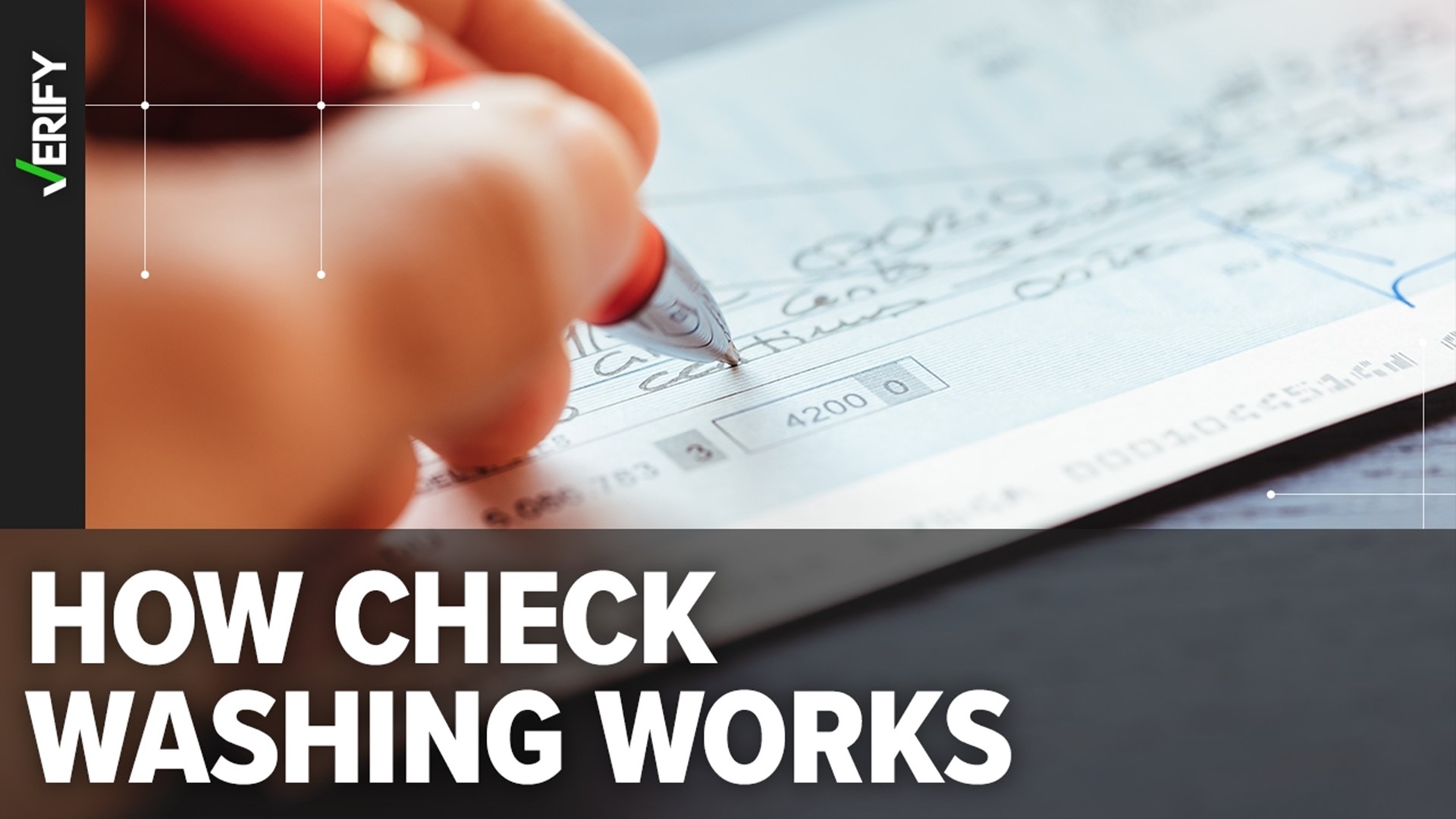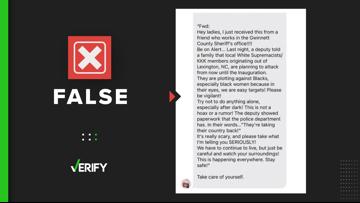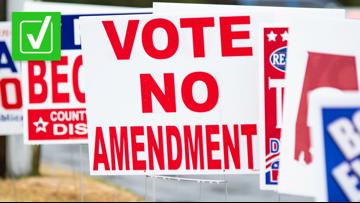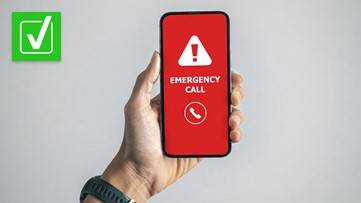There are posts online warning that an old, low-tech form of fraud called “check washing” is on the rise. It involves thieves stealing checks out of mailboxes and rewriting them.
But is it actually possible for someone to steal your money through mailed checks?
THE QUESTION
Can thieves steal your money by rewriting checks left in your mailbox?
THE SOURCES
FinCEN, the U.S. Treasury’s Financial Crimes Enforcement Network
THE ANSWER
Yes, thieves can steal your money by rewriting checks left in your mailbox.
WHAT WE FOUND
“Check washing” is a form of check fraud in which a scammer steals a completed, signed check from a mailbox or postbox, uses household chemicals to erase everything but the signature and then rewrites the check to send money to themselves.
This is a well-documented form of fraud that criminals have used for years. The Association of Certified Fraud Examiners issued a warning about check washing in 2010 that highlighted many of the same tactics authorities warn of today. SQN Banking Systems, a check fraud security company, says losses from check washing schemes were over $800 million last year.
There are a few different ways thieves can get to your checks, according to the AARP. The easiest method is by simply taking checks out of unlocked mailboxes. Another way is by stealing or copying a mail carrier’s key to get into a USPS collection box. Even if the thief doesn’t have a key, they can sometimes get checks in USPS collection boxes by “fishing them out with string and something sticky — like rodent glue traps or a glue-covered bottle.”
Once they have the checks, the fraudsters can use cheap chemicals like bleach or nail polish remover to remove the payee name and amount, the AARP says. They often erase the dollar amount to replace it with a much larger payout, sometimes hundreds or thousands of dollars more, FinCEN, the U.S. Treasury’s Financial Crimes Enforcement Network, says.
Sometimes, the person stealing the check will simply cash it. Other times, FinCEN says, the person will copy, print and sell blank washed checks online through the dark web or encrypted social media platforms.
How can I avoid becoming a victim of check washing?
The simplest and most effective way to avoid becoming a victim of a check washing crime is to not use checks in the first place. If it’s possible to pay a bill online from a secure network, then you should do that instead of using a check, the AARP says. The Better Business Bureau says online banking is generally safe, as long as you use strong passwords and you protect your data by not giving out personal information to unsolicited emails, calls or messages.
If you do have to mail out a check, don’t leave it in your mailbox or let it sit in an outdoor USPS collection box. The United States Postal Inspection Service says you should mail out your checks directly from your local post office, and if you’re going to use a blue collection box, drop off your mail just before the last pickup.
The Better Business Bureau Serving Central East Texas also recommends using high-security checks and writing on those checks with gel pens rather than ballpoint pens. Both high-security checks and gel pens are labeled as such when on sale. The AARP says non-erasable gel ink in particular may be more difficult to remove than ballpoint pen ink.
You shouldn’t leave incoming mail in the mailbox for very long, either. If you’re away from home for an extended period of time, the Postal Inspection Service recommends having the post office hold your mail or having a trusted friend pick it up for you.
Finally, monitor your bank account regularly. This won’t necessarily stop anyone from stealing your check, but it might help you discover that someone has stolen a check while you still have time to fix the situation.
What should I do if I think someone might have stolen and washed my check?
If you find any suspicious activity on your bank account, contact your bank immediately. The AARP says banks are generally required to replace any money stolen from your account through fraudulent checks, but only if the fraud is reported within 30 days of the date of your bank statement.
FinCEN says someone who steals a check might also take your other mail and could use your personal information for other schemes like credit card or credit account fraud. Because of this, AARP recommends you should also contact the credit reporting agencies.
The American Bankers Association recommends you immediately report check washing crimes to your financial institution, the United States Postal Inspection Service and your local police department.












